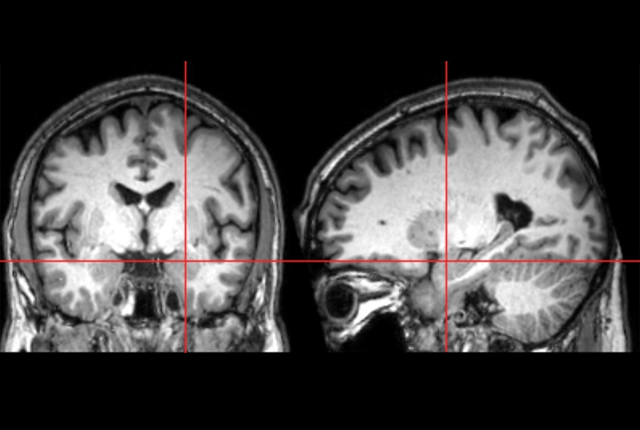Overgrowth of the part of the brain known as the amygdala in the first year of life could be what causes children to develop autism, according to a new study. The small structure grows much faster between the ages of six and 12 months in babies who are then diagnosed with autism, say scientists.
The amygdala sits deep inside the brain and plays a vital role in recognizing people’s faces and fearful images which warn people danger could be around the corner. This part of the brain is abnormally large among school children with autism, scientists have previously reported.
But at what stage of their development this enlargement happens has remained a mystery until now.
“We also found that the rate of amygdala overgrowth in the first year is linked to the child’s social deficits at age two,” says the study’s first author Dr. Mark Shen, an assistant professor of psychiatry and neuroscience at the University of North Carolina Chapel Hill, in a statement. “The faster the amygdala grew in infancy, the more social difficulties the child showed when diagnosed with autism a year later.”
A total of 408 babies were enrolled in the study. Many were considered to be at risk of developing autism because they had an older sibling with the condition. During the study, 58 of the 212 considered to be at risk were later diagnosed with autism and 29 with a genetic condition known as fragile X syndrome which delays development.
More than 1,000 MRI scans were carried out while the children were asleep at six, 12 and 24 months of age and analyzed by the researchers. At six months, children with fragile X syndrome already showed signs their brains were not developing properly, but not those who were later diagnosed with autism.
Instead, those who developed autism experienced a gradual decline in mental abilities between six and 24 months of age, the researchers found. Their amygdala also grew faster than other babies including those with fragile X syndrome during this time. It expanded until they reached 24 months and their behaviour became sufficiently evident to warrant an autism diagnosis.
While the researchers are not entirely sure why this occurs, they are starting to piece the puzzle together.
Previous studies show babies who develop autism struggle to process visual and sensory information. This could place “increased stress” on the amygdala which has also been found to play a role in other psychiatric conditions like anxiety and depression.
“Our research suggests an optimal time to start interventions and support children who are at highest likelihood of developing autism may be during the first year of life,” says senior author Joseph Piven, a professor of psychiatry and pediatrics at Carolina. “The focus of a pre-symptomatic intervention might be to improve visual and other sensory processing in babies before social symptoms even appear.”
The findings are published in the American Journal of Psychiatry.
Report by Tom Campbell, South West News Service












